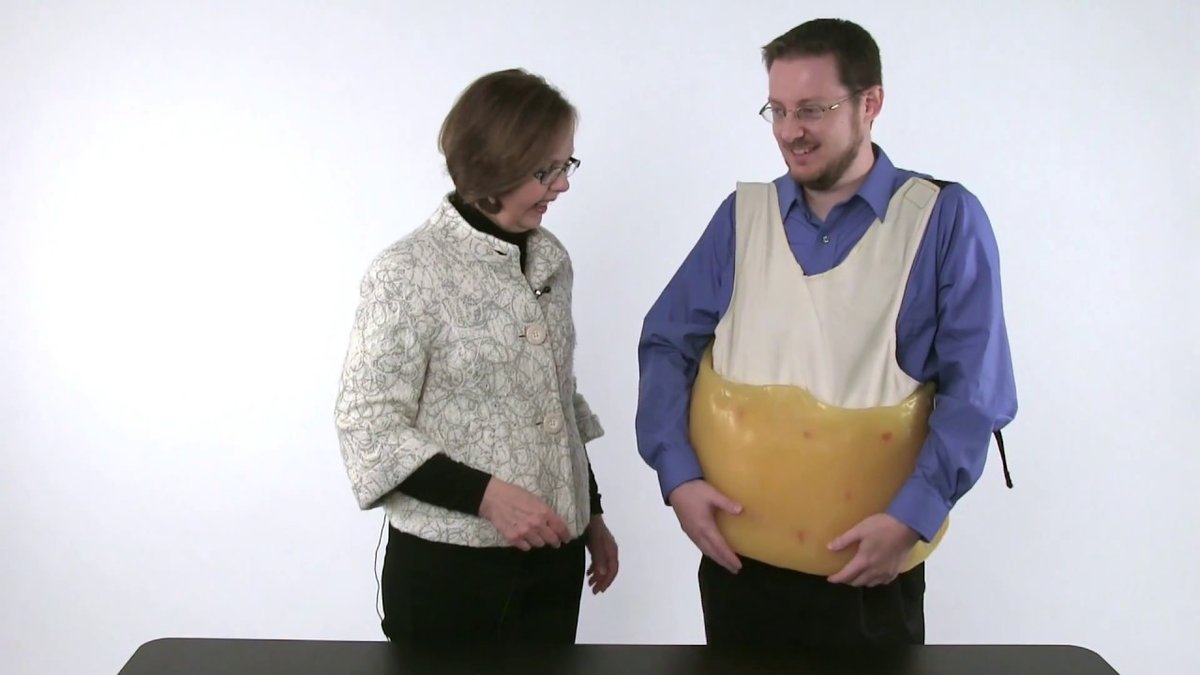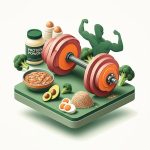Twenty pounds of fat. It’s a phrase we often hear, usually in the context of weight loss or gain. But what does 20 lbs of fat actually look like? And perhaps more importantly, what does it mean for your health and well-being? This guide will break down the visual impact, health implications, and actionable strategies for dealing with excess fat, arming you with the knowledge to make informed decisions about your body.
At a Glance:
- 20 lbs of fat is visually significant, equivalent to about 45 liters in volume.
- Excess fat increases the risk of various health problems.
- Healthy fat loss is a gradual process involving diet and exercise.
- Focus on sustainable habits for long-term success.
- Body composition matters more than just the number on the scale.
Visualizing 20 lbs of Fat: More Than Just a Number
Let’s get visual. Twenty pounds of fat isn’t just a random number on a scale. It’s a tangible volume – around 45 liters to be precise. Think of it as a medium-sized duffel bag, or a large watermelon. That’s a considerable amount! While one pound of muscle and one pound of fat both weigh one pound on the scale, fat takes up much more space than muscle due to its lower density. This is why someone with a higher muscle mass can weigh more but appear leaner than someone with a higher body fat percentage at the same weight.
Where Does It Go? Distribution and Its Impact
Where you store fat is largely determined by genetics, hormones, and gender. Men tend to accumulate fat around the abdomen (think “beer belly”), while women often store it in the hips, thighs, and buttocks. This distribution isn’t just about aesthetics; it has significant health implications. Abdominal fat, in particular, is strongly linked to increased risks of heart disease and type 2 diabetes.
Visually, 20 lbs of fat can manifest in various ways:
- A double chin or fuller face
- Increased waist circumference
- Thicker thighs and/or glutes
- Flabby arms
- A softer, less defined physique
Beyond the physical appearance, carrying excess fat can also impact self-esteem and mental well-being.
The Health Risks Hiding Beneath the Surface
Excess body fat, especially when concentrated around the abdomen, increases the risk of a range of health problems. This isn’t just about fitting into your favorite jeans; it’s about protecting your long-term health. Here are some key risks:
- Heart disease: Excess fat contributes to high cholesterol and high blood pressure, major risk factors for heart attacks and strokes.
- Type 2 diabetes: Fat interferes with the body’s ability to regulate blood sugar.
- Certain cancers: Obesity is linked to an increased risk of several types of cancer, including breast, colon, and endometrial cancer.
- Fatty liver disease: Fat accumulation in the liver can lead to inflammation and liver damage.
- Hormonal imbalances: Excess fat can disrupt hormone production, affecting everything from mood to fertility.
- Mental health issues: Obesity is associated with an increased risk of depression and anxiety.
- Sleep apnea: Excess weight can obstruct airways during sleep, leading to sleep apnea.
The Path to Healthy Fat Loss: A Sustainable Approach
The good news? Losing 20 lbs of fat is achievable with a strategic and sustainable approach. Forget quick fixes and crash diets; they rarely work in the long run and can be harmful. A healthy rate of fat loss is generally considered to be 1-2 pounds per week. That means it would take roughly 10-20 weeks to lose 20 pounds safely and effectively, as what losing 20 pounds looks after that period.
Here’s a breakdown of key strategies:
Calorie Deficit: The Foundation of Fat Loss
To lose fat, you need to create a calorie deficit – consuming fewer calories than you burn. This forces your body to tap into its fat stores for energy.
- Calculate your needs: Use an online calorie calculator to estimate your daily calorie needs based on your age, gender, activity level, and weight loss goals.
- Track your intake: Use a food tracking app or journal to monitor your calorie consumption.
- Make small changes: Start by making small, manageable changes to your diet, such as reducing portion sizes or swapping sugary drinks for water.
Fueling Your Body with Protein-Rich Foods
Protein is essential for building and repairing muscle tissue, and it also helps you feel fuller for longer, making it easier to stick to your calorie deficit. Include protein-rich foods in every meal, such as:
- Lean meats: Chicken, turkey, beef
- Fish: Salmon, tuna, cod
- Eggs
- Beans and lentils
- Tofu and tempeh
- Dairy products (in moderation): Greek yogurt, cottage cheese
Workout Smarter: Cardio and Resistance Training
Exercise is crucial for burning calories and building muscle. Combine cardiovascular exercise with resistance training for optimal results.
- Cardio: Activities like running, swimming, cycling, and brisk walking burn calories and improve cardiovascular health. Aim for at least 150 minutes of moderate-intensity cardio per week.
- Resistance training: Lifting weights or using resistance bands helps build muscle mass, which increases your metabolism and helps you burn more calories even when you’re at rest. Aim for 2-3 resistance training sessions per week, targeting all major muscle groups. It is also important to note that Shedding 20 Pounds of Fat is a process that requires consistency and dedication.
Hydration is Key
Drinking plenty of water is essential for overall health and can also aid in weight loss. Water helps you feel full, boosts your metabolism, and helps your body burn fat more efficiently. Aim for at least 8 glasses of water per day.
Prioritize Sleep and Stress Management
Sleep deprivation and chronic stress can wreak havoc on your hormones, leading to increased appetite and fat storage.
- Aim for 7-9 hours of quality sleep per night.
- Practice stress-reducing activities like yoga, meditation, or spending time in nature.
- Limit caffeine and alcohol intake, especially before bed.
The 80/20 Rule: A Balanced Approach
Don’t feel like you have to completely deprive yourself of your favorite foods. The 80/20 rule suggests that you focus on eating healthy, whole foods 80% of the time and allow yourself to indulge in treats in moderation 20% of the time. This can help you stay motivated and avoid feeling deprived, making it easier to stick to your healthy eating plan in the long run.
Beyond the Scale: Focusing on Body Composition
While the number on the scale can be a useful indicator of progress, it’s important to remember that it doesn’t tell the whole story. Body composition – the ratio of muscle to fat – is a more accurate reflection of your overall health.
As you lose fat and build muscle, you may not see a significant change on the scale, but your body will be undergoing a transformation. This is known as body recomposition. You’ll likely notice that your clothes fit better, you have more energy, and you look and feel healthier. One trend that has gained popularity in recent years is the use of body composition scales that can provide a breakdown of your body fat percentage. These scales use bioelectrical impedance to estimate the amount of fat in your body, giving you a more accurate picture of your overall health.
Common Questions and Misconceptions
- Will I lose weight faster if I starve myself? No! Starving yourself is not only unhealthy but also counterproductive. It can lead to muscle loss, a slower metabolism, and nutrient deficiencies. It can also trigger binge eating.
- Can I target fat loss in specific areas? Unfortunately, spot reduction is a myth. You can’t choose where you lose fat. Fat loss occurs throughout the body.
- Is it okay to use weight loss supplements? Many weight loss supplements are ineffective and can even be dangerous. It’s best to focus on a healthy diet and exercise plan. If you are considering using supplements, consult with a doctor or registered dietitian first.
- Why am I not losing weight even though I’m eating healthy and exercising? There could be several reasons, including inaccurate calorie tracking, hidden calories (e.g., sugary drinks, sauces), underlying medical conditions, or hormonal imbalances. Consult with a doctor or registered dietitian to investigate further.
Take Control: Actionable Steps for a Healthier You
Losing 20 lbs of fat is a journey, not a destination. It requires commitment, patience, and a willingness to make sustainable lifestyle changes. Here are actionable steps you can take to get started:
- Consult with a healthcare professional: Talk to your doctor or a registered dietitian to get personalized advice and rule out any underlying medical conditions.
- Set realistic goals: Aim for a gradual weight loss of 1-2 pounds per week.
- Create a meal plan: Plan your meals ahead of time to ensure you’re eating healthy, balanced meals.
- Find an exercise routine you enjoy: Choose activities you find fun and engaging to make exercise a sustainable part of your routine.
- Track your progress: Monitor your weight, body measurements, and body composition to track your progress and stay motivated.
- Celebrate your successes: Acknowledge and celebrate your milestones along the way to stay motivated and build momentum.
- Be patient and persistent: Don’t get discouraged if you don’t see results immediately. Stay consistent with your healthy habits, and you will eventually reach your goals.
Losing 20 lbs of fat can significantly improve your health, well-being, and quality of life. Focus on building sustainable habits, prioritize your health, and celebrate your progress along the way. Remember, it’s about more than just the number on the scale; it’s about feeling your best and living a long, healthy life.
- Gluten Free Meal Prep Ideas for Delicious, Hassle-Free Eating - November 28, 2025
- Gluten Free Meal Prep for Stress-Free and Healthy Eating - November 27, 2025
- Quick And Easy Chicken Thigh Meal Prep For Weight Loss - November 26, 2025










